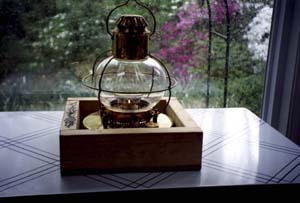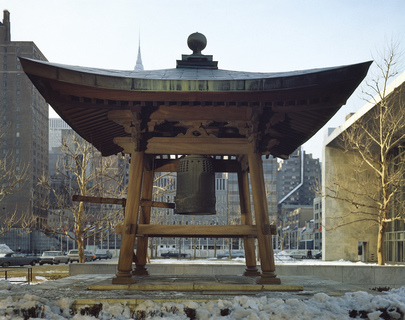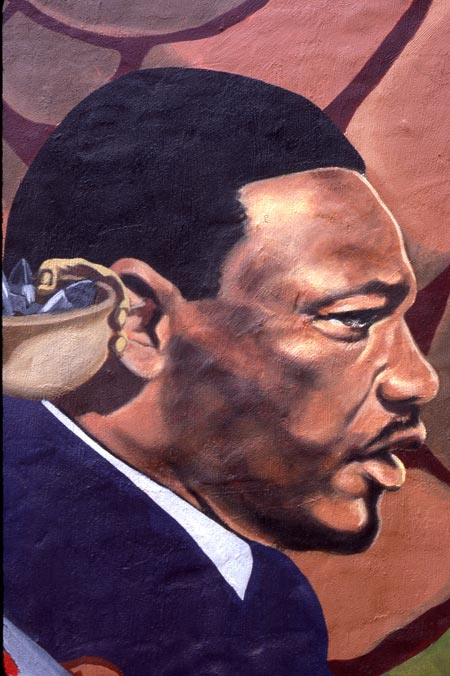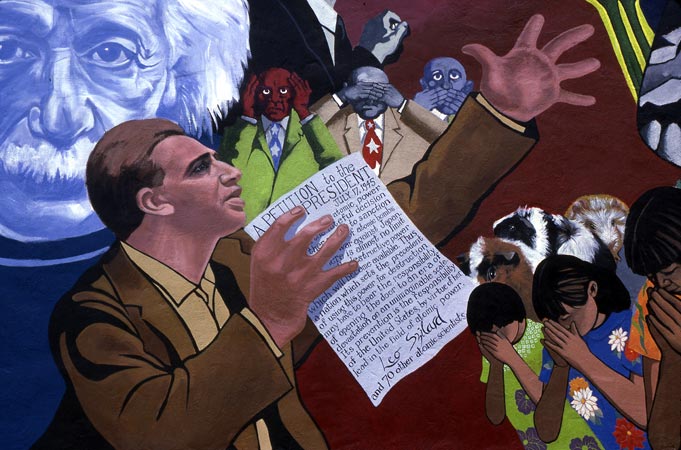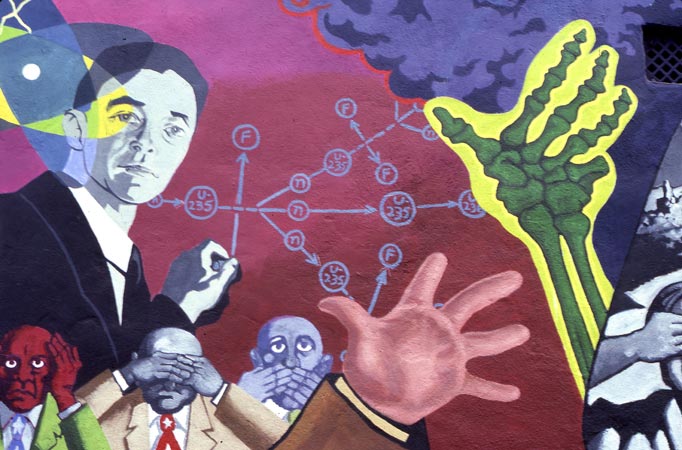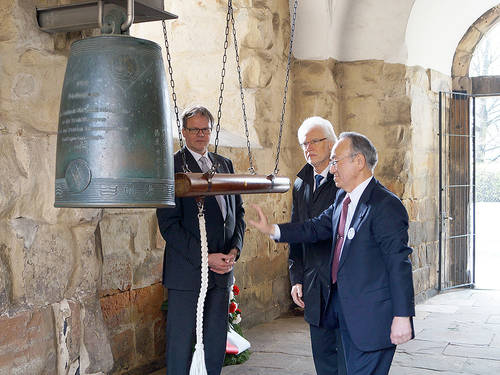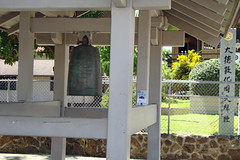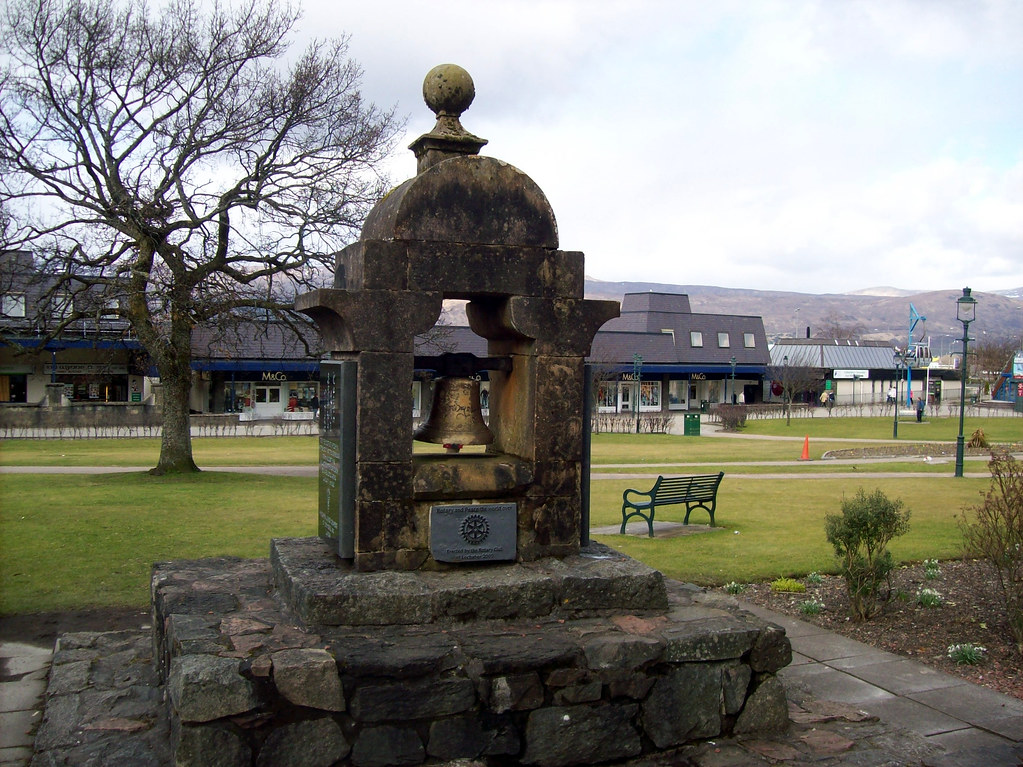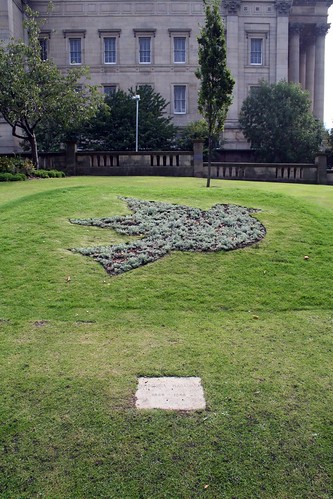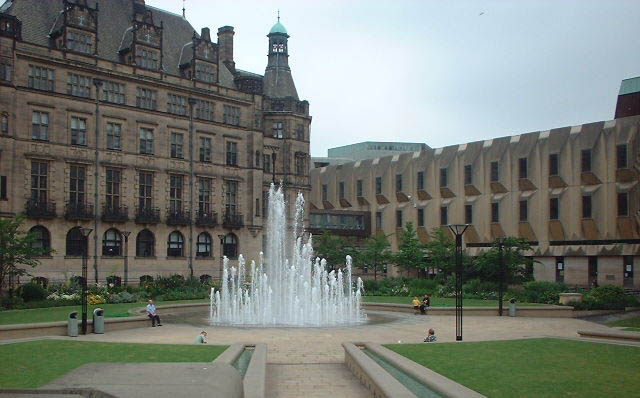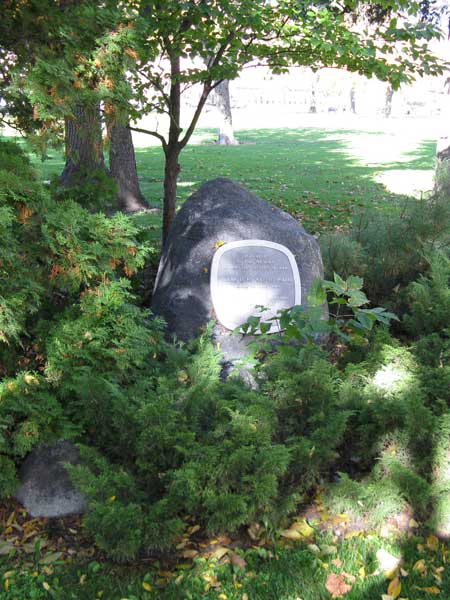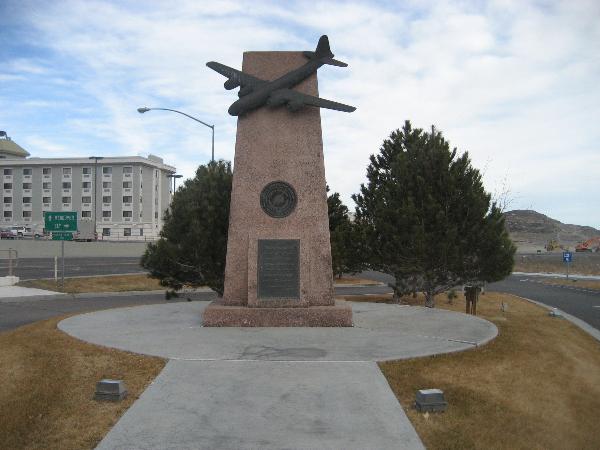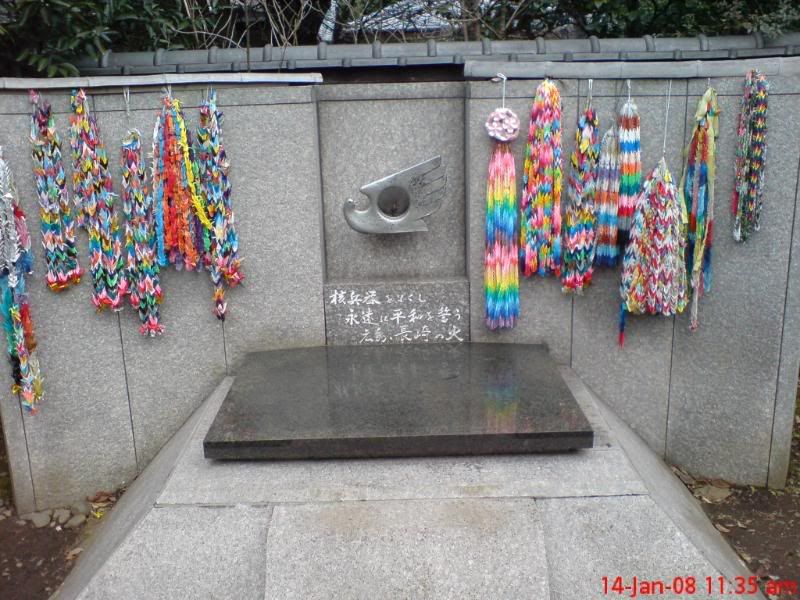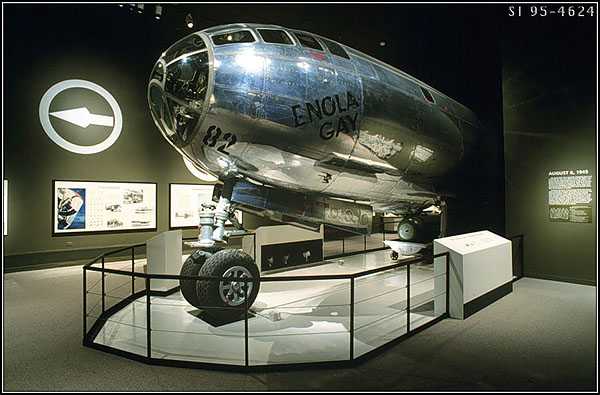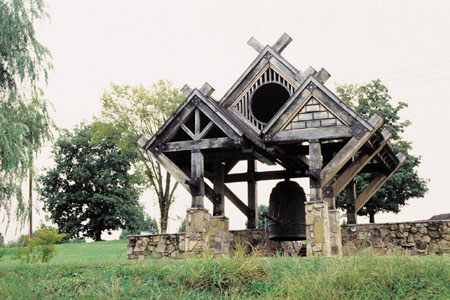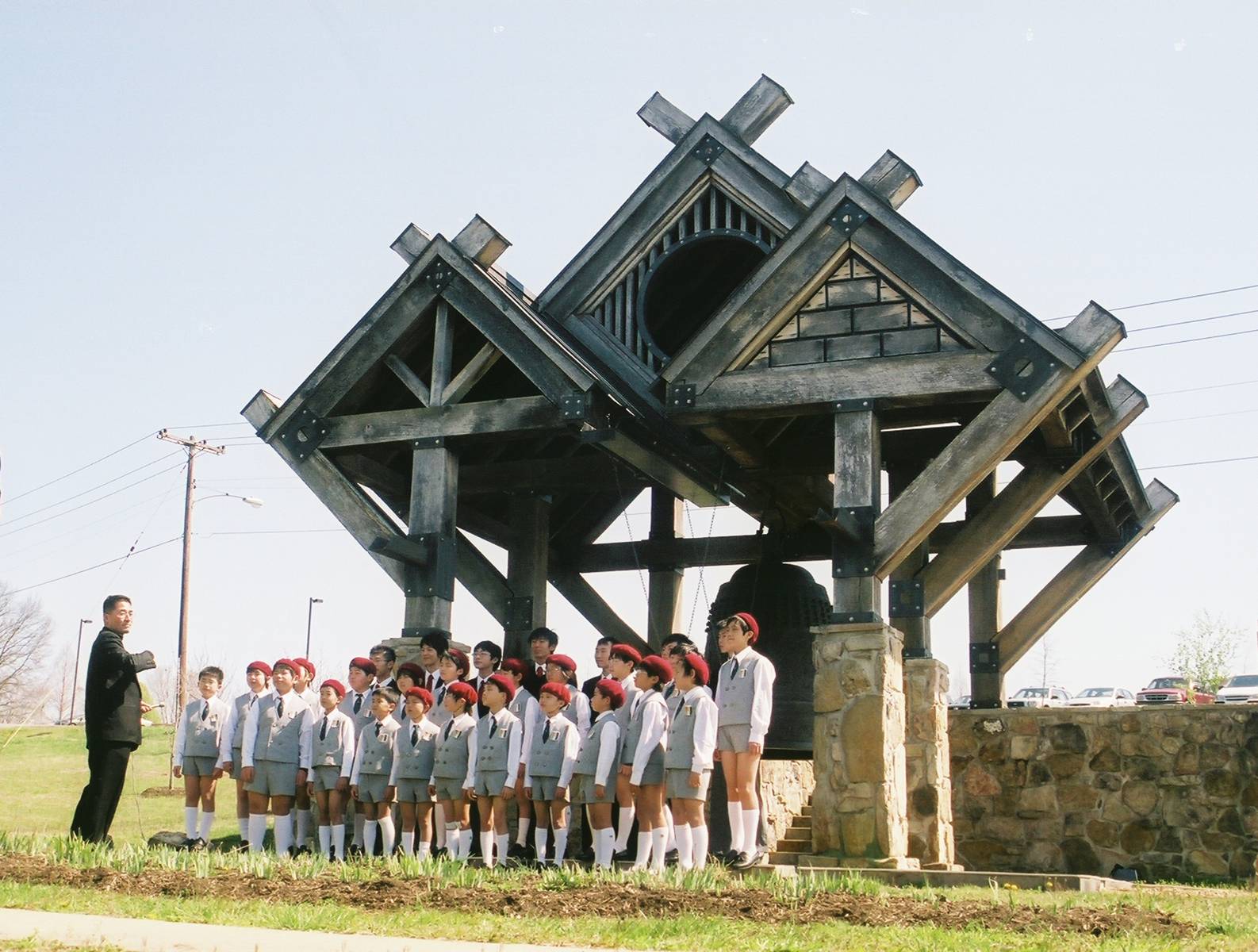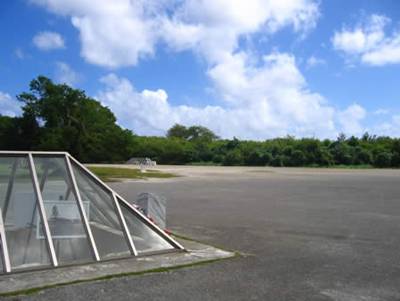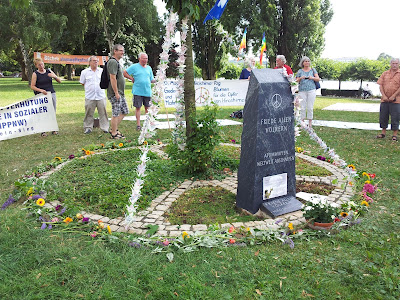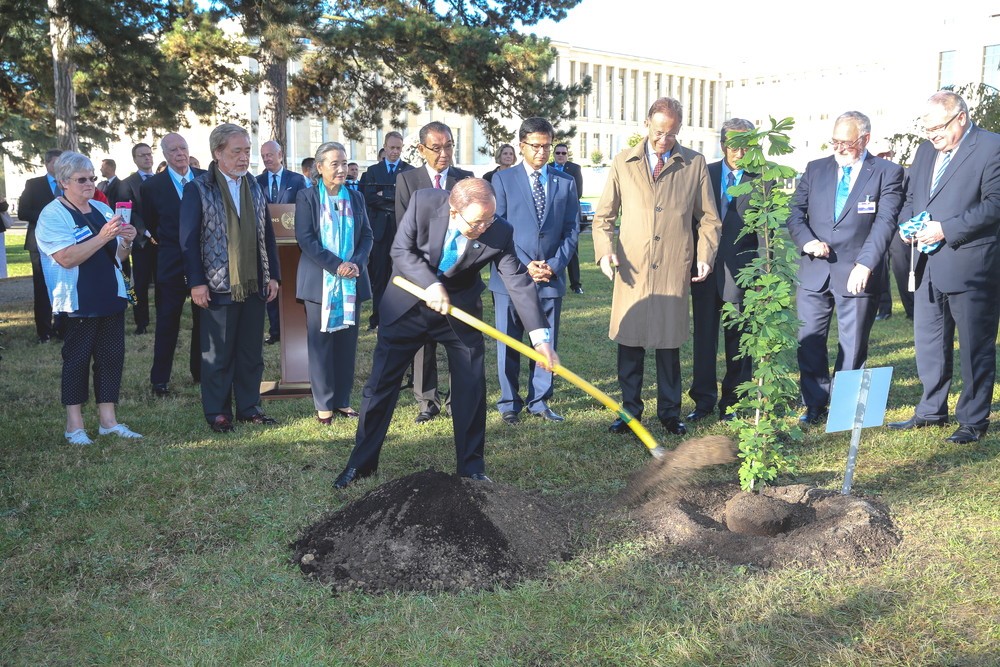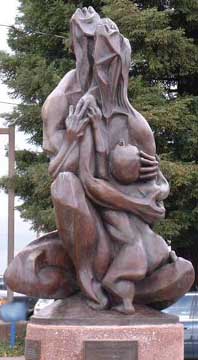

|   December 6, 1995 - "Colateral Damage: A Reality of War," downtown, Santa Cruz, California (USA). Created by metal artist E.A. Chase. "Bronze humanoid figures peer & wail skyward, clutching each other as they appear to melt, perhaps the effect of napalm, an atomic burst, or some other horror." Honors civilians killed in wartime.
“Designed in 1959 as a gift for the United Nations, the controversial nature of the piece led to a definitive communication from the State Department that it was ‘inappropriate.’ Finally, decades later in 1995, the statue was instead dedicated in the City of Santa Cruz, now to commemorate the 50th anniversary of the atomic bombing of Hiroshima & Nagasaki. It is inscribed: 'Collateral Damage: a reality of war by E.A. Chase. In memory of civilians who have died in all wars and in appreciation of all who actively “wage peace.” It is dedicated by Veterans of Foreign Wars, Bill Motto Post 5888; The Resource Center for Nonviolence; The City of Santa Cruz; and, finally, by the sculptor himself: longtime local E.A. Chase, who donated the statue in full knowledge that it would never be placed in New York’s U.N. Plaza.'
“The historic erection of this statue in Santa Cruz Public Space was preceded by a gun turn-in & a Tibetan singing bowl ringing. Thereafter, the guns & the bowl were buried beneath. The dedication was followed by a memorable concert attended by 12,000 people. The commemorative video for the dedication of the Statue is entitled, "Collateral Damage: A time for community response.” It captures the essence of the historic moment, as well as the stars who graced the stage that day, including David Crosby, Graham Nash, and Bonny Raitt." Information courtesy of Stephen Zunes 19Oct2013. Entry #155 in the "Peace Movement Directory" by James Richard Bennett (2001). December 6, 1995 - "Colateral Damage: A Reality of War," downtown, Santa Cruz, California (USA). Created by metal artist E.A. Chase. "Bronze humanoid figures peer & wail skyward, clutching each other as they appear to melt, perhaps the effect of napalm, an atomic burst, or some other horror." Honors civilians killed in wartime.
“Designed in 1959 as a gift for the United Nations, the controversial nature of the piece led to a definitive communication from the State Department that it was ‘inappropriate.’ Finally, decades later in 1995, the statue was instead dedicated in the City of Santa Cruz, now to commemorate the 50th anniversary of the atomic bombing of Hiroshima & Nagasaki. It is inscribed: 'Collateral Damage: a reality of war by E.A. Chase. In memory of civilians who have died in all wars and in appreciation of all who actively “wage peace.” It is dedicated by Veterans of Foreign Wars, Bill Motto Post 5888; The Resource Center for Nonviolence; The City of Santa Cruz; and, finally, by the sculptor himself: longtime local E.A. Chase, who donated the statue in full knowledge that it would never be placed in New York’s U.N. Plaza.'
“The historic erection of this statue in Santa Cruz Public Space was preceded by a gun turn-in & a Tibetan singing bowl ringing. Thereafter, the guns & the bowl were buried beneath. The dedication was followed by a memorable concert attended by 12,000 people. The commemorative video for the dedication of the Statue is entitled, "Collateral Damage: A time for community response.” It captures the essence of the historic moment, as well as the stars who graced the stage that day, including David Crosby, Graham Nash, and Bonny Raitt." Information courtesy of Stephen Zunes 19Oct2013. Entry #155 in the "Peace Movement Directory" by James Richard Bennett (2001). 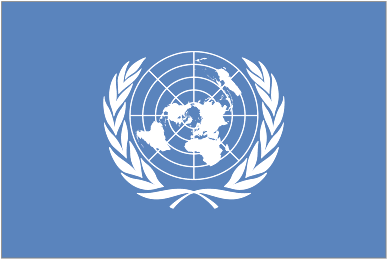
|
